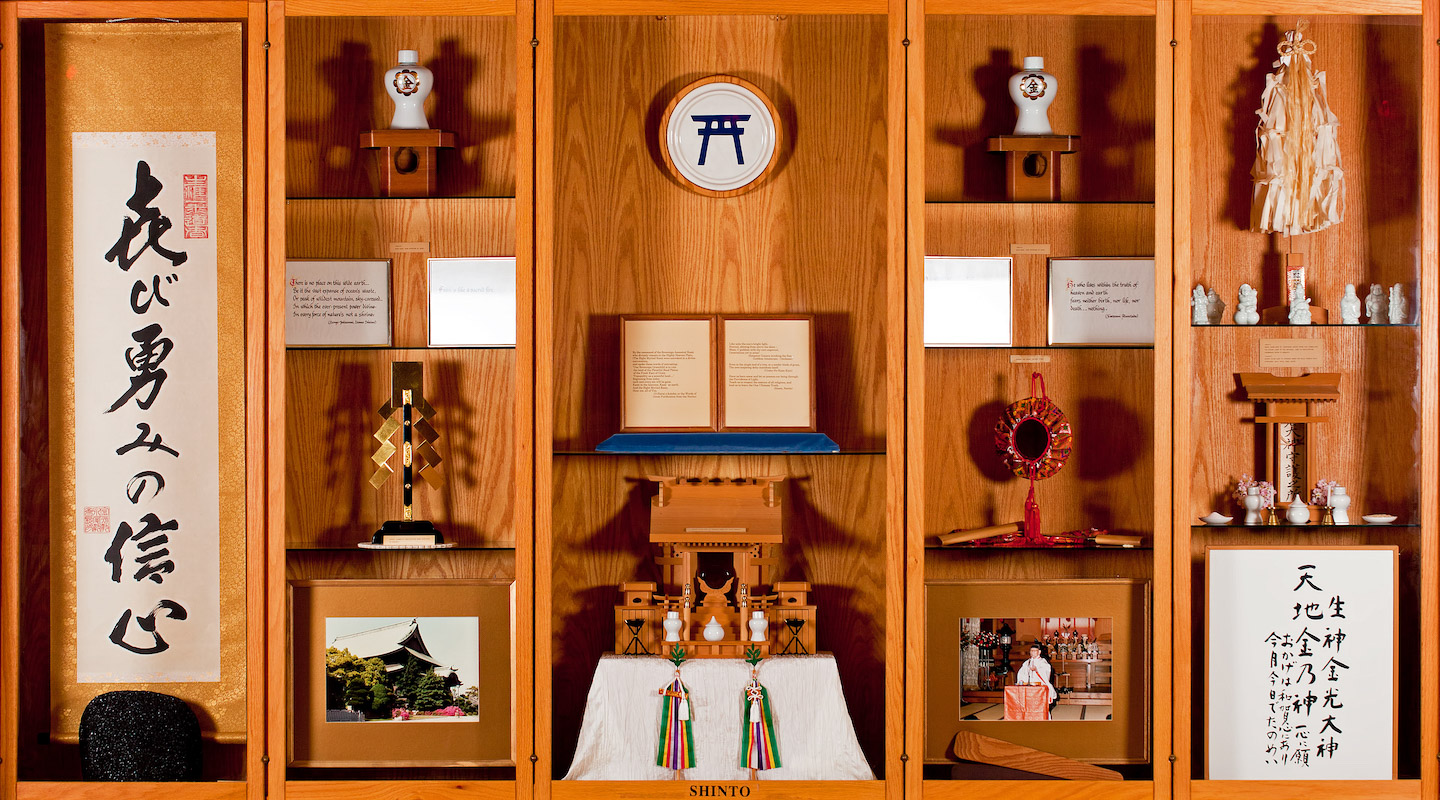Shinto
The Ten Precepts
1. Do not transgress the will of the gods.
2. Do not forget your obligations to ancestors.
3. Do not offend by violating the decrees of the State.
4. Do not forget the profound goodness of the gods through which calamities and misfortunes are averted and sickness is healed.
5. Do not forget that the world is one great family.
6. Do not forget the limitations of your own person.
7. Do not become angry even though others become angry.
8. Do not be sluggish in your work.
9. Do not bring blame to the teaching.
10. Do not be carried away by foreign teachings.
—Shinri Kyo Sect

Heron’s Dance
“To the most holy Kami, Izanagi, who purifed himself by ritual bathing in the calm sea in the morning sun—I entreat him to purify away all the impurity, disasters, sins, and faults.” —The Purification Words
Shinto, “the Kami Way,” is the indigenous faith of the Japanese people. Deeply connected with nature, Shinto finds a healing and purifying power in mountains, streams, wind, and trees. The essence of life energy in natural phenomena is deified and worshipped as Kami. The four elements of worship are purification, offering, prayer, and symbolic feast. The goal of Shinto is the removal of the “dust” which hides the divine nature of human beings.
The earliest historical works of Japan, the Kojiki and the Nihongi, are highly regarded by Shintoists and are rich in information concerning early Shinto rituals and practices. These books, however, are not believed to be revealed scripture.
Shinto mythology describes the formation of the Japanese Islands as a result of the union of Izanagi, the male creator, and Izanami, the female creator. Their daughter, the sun goddess Amaterasu, is the central figure of many Japanese shrines, including the Grand Shrine of Ise. Of the 100,000 Shinto shrines gracing the Japanese landscape, Ise is unique. This majestic shrine is dedicated to the highest expression of respect for the Imperial family and all that is best in the culture, history, and racial consciousness of the Japanese people. Like other Shinto shrines. Iso has a torii gate, which separates the mundane world from the purified atmosphere of the temple.
Purification is central to Shinto. The ceremony of bathing for purification is called Misogi. It is ideally practiced in a calm ocean facing the sun. This harmony with water, the life of Nature, removes the heavy, impure kegare vibrations. This invisible dross collects as result of negative thoughts and emotions and must be removed by the Shintoist to realize his or her own Kami nature.
The mirror also has an important role in the Shinto path. The goddess Amaterasu told humans to worship the mirror, which reflects their own image, as if they were worshiping Her in Her presence. The mirror, therefore, is the symbol of Amaterasu’s spirit.
“The mirror hides nothing. It shines without a selfish mind. Everything good and bad, right and wrong, is reflected without fail. The mirror is the source of honesty because it has the virtue of responding to the shape of object. It points out the fairness and impartiality of the divine will.” —Jinno Shotoki
All Faiths Hall Quotations
All Faiths Hall Quotations
“There is no place on this wide earth,
Be it the vast expanse of ocean’s waste,
Or peak of wildest mountain, sky-caressed,
In which the ever-present power divine,
In even/force of nature’s not a shrine.”
—Senge-Takazumi-Izumo Shrine
“Faith is like a sacred fire,
Pass it on from generation to generation
Without extinguishing it.”
— Konko Daijin
“My child, when thou lookest upon the mirror, let it be as if thou wert looking on me; let it be with thee on thy couch and thy hall, and let it be to thee a holy mirror.”
—Amaterasu Yamakage
“He who lives within the truth of heaven and earth fears neither birth, nor life, nor death—nothing.”
— Kurozumi Munetada

